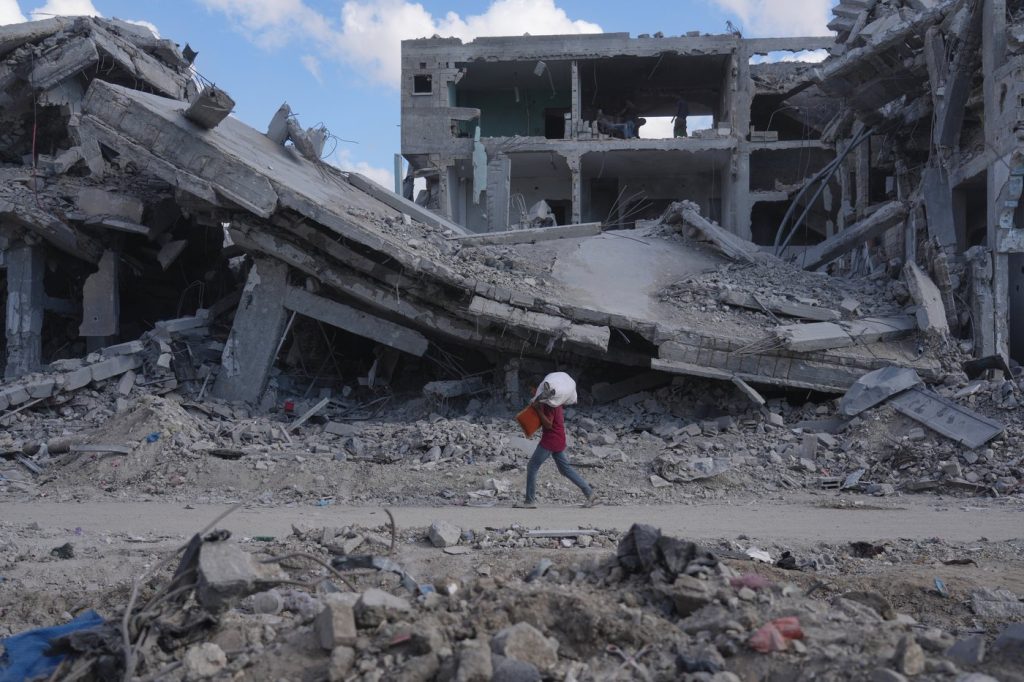SAN JUAN, Puerto Rico (AP) — Tropical Storm Melissa has been nearly stationary in the central Caribbean as of Friday, with forecasters warning of its potential to strengthen and impact Jamaica as a powerful hurricane while causing significant rainfall in southwest Haiti. Forecasts predict that rainfall may reach up to 35 inches (89 centimeters) in parts of Haiti, raising alarms for catastrophic flooding and landslides in the region.
The storm was situated approximately 180 miles (290 kilometers) southeast of Kingston, Jamaica, and about 245 miles (390 kilometers) southwest of Port-au-Prince, Haiti. With maximum sustained winds of 65 mph (100 kph), Melissa is moving northwest at a slow pace of 3 mph (6 kph). A hurricane watch and tropical storm warning have been issued for both Jamaica and Haiti’s southwest peninsula.
Forecasters anticipate that Melissa's center could approach or move over Jamaica early next week, estimating that areas could receive between 25 to 35 inches of rain, particularly across Haiti's Tiburon Peninsula, where rains of such volume are considered unusually high for a slow-moving storm. The storm is expected to make landfall in eastern Cuba as a major hurricane by early Wednesday, with forecasts predicting up to 12 inches (30 centimeters) of rain for some areas.
The National Hurricane Center has strongly warned of the catastrophic potential of Melissa, particularly for southwestern Haiti, where heavy rainfall could lead to flash flooding and landslides. Reports confirm that at least three people have died in Haiti due to landslides caused by the heavy rains. The death toll includes two people who were killed by a landslide in Port-au-Prince and another individual in southern Haiti following a tree fall. Additionally, five individuals have been reported injured in flooding incidents across the country.
In preparation for the storm, Haiti’s Civil Protection Agency has set up over 100 emergency shelters in the southern region. Residents, including Wilgar Joseph from Les Cayes, expressed concerns over their safety with vulnerable housing conditions, opting to leave their homes for safer places. Meanwhile, thousands of others are in makeshift shelters in Port-au-Prince after gang violence forced them to flee their homes, amplifying concerns for their safety as the storm approaches.
Jamie Rhome, deputy director at the U.S. National Hurricane Center, stated, “These heavy rains are just going to sit over one area for several days.” This slow movement could lead to Jamaica experiencing hurricane conditions for 72 hours or more. The potential humanitarian disaster is an increasing concern as the storm prepares to drastically impact the already saturated grounds of Jamaica, heightening risks for flooding and landslides.
Local residents, including Marcus Thompson from Kingston and Alton Williams from Mandeville, are taking precautions by stocking essential supplies and securing their homes. Schools, health centers, and government offices throughout Jamaica closed on Thursday, with more than 650 shelters activated, as officials brace for the storm's potential impact, and airports could close within 24 hours if a hurricane warning is issued.
Jamaican Prime Minister Andrew Holness acknowledged the challenges posed by the storm's slow movement and urged the public to stay vigilant. The Bahamas has also announced the evacuation of Bahamian students from Jamaica in advance of the impending storm.
In the Dominican Republic, Tropical Storm Melissa has already caused damage to nearly 200 homes and disrupted water supply systems affecting over half a million customers. The storm has also prompted the closure of all public schools in the country and mandatory evacuations in areas under alert. Dominican President Luis Abinader emphasized the importance of saving lives amidst the risk of heavy rainfall.
Tropical Storm Melissa is categorized as the 13th named storm of the 2023 Atlantic hurricane season, which runs from June 1 to November 30, during a period predicted to have an above-normal number of storms.












